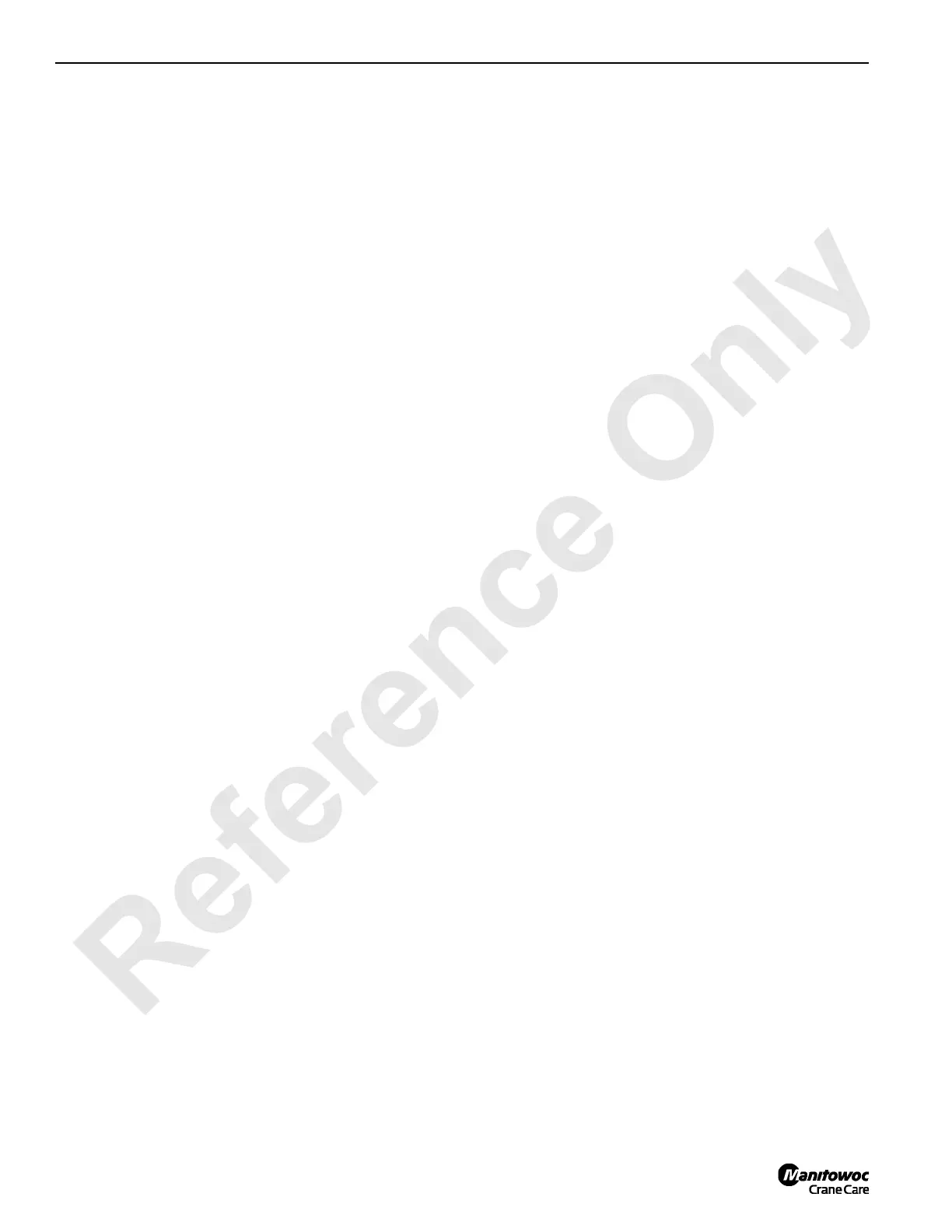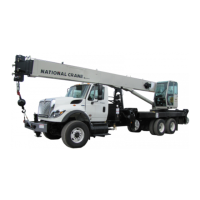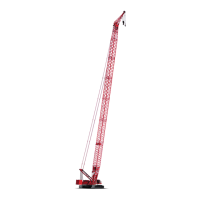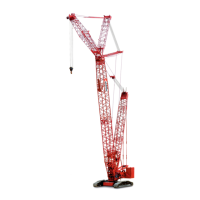INTRODUCTION 14000 SERVICE MANUAL
1-16
Published 09-05-14, Control # 226-02
Hydraulic Components
High-pressure piston pumps driven by a multi-pump drive
transmission provide independent closed-loop hydraulic
power for crane functions. Each system has relief valves to
protect for overload or shock.
Hydraulic Tank
The hydraulic tank has two sections; a suction section and a
return section. Hydraulic tank components include a
separate breather, suction strainer, return filter, temperature
sensor, level sensor, and pressure port.
The suction section has a 200 mesh (74 micron) mesh
strainer that allow fluid bypass around strainer at 5 psi (0.34
bar) if it becomes plugged. The breather protects the tank
from excessive pressures and opens at 2.1 psi (0.14 bar).
Return filter has a 25 psi (1.7 bar) bypass that enables
system fault alarm if filter becomes plugged. A system fault
alarm also indicates when hydraulic tank fluid level is low,
hydraulic fluid temperature is too high.
Tank hydraulic strainers and filters remove contaminants
from fluid. System filtration does not transform deteriorated
fluid into purified quality fluid. A program to test or replace
hydraulic fluid at scheduled times must be established for
efficient operation of all hydraulic systems.
Shut-off Valve
A shut-off valve is located between tank and suction
manifold. Close this valve when performing maintenance on
hydraulic systems. Before starting engine, always check
that the hydraulic tank shut-off valve is open.
Suction Manifold
Tank suction manifold supplies fluid to all system pumps.
When shut-off valve is open, fluid flows from tank through
suction manifold to charge pump inlets. Suction line vacuum
opens at 0.3 psi (15 mm Hg).
Return Manifold
Return fluid from motor and pump case drains, valves and
cylinders is routed through return manifold and cooler before
entering hydraulic tank. Return manifold has a at 25 psi (1.7
bar) bypass that allows fluid to bypass cooler if it becomes
plugged.
Oil Temperature Valve
Behind the lower right side of the radiator is the
thermostatically controlled valve. At 140°F (60°C), the valve
begins to open, allowing return oil to flow to the cooler.
Hydraulic Pumps
See hydraulic pump manufacturer’s manual for a description
of a hydraulic piston pump. See Hydraulic System
Specifications in Section 2 of this manual.
Drum, swing, and travel pumps are variable displacement,
axial piston pumps that operate in a bi-directional closed-
loop system
.
Each pump contains:
• Charge pump.
• EDC (Electrical Displacement Control).
• Cylinder block where pistons are positioned axially
around a drive shaft.
• Charge pressure relief valve.
• Two multifunction (relief) valves.
Each system pump has a gerotor type gear charge pump
that is internally mounted on the end of each pump system
drive shaft. System charge pump draws fluid directly from
suction manifold and delivers it to closed-loop system at a
charge pressure of approximately at 350 psi (24 bar).
Charge pressure depends on engine load/speed, pressure
relief valve settings, and hydraulic system efficiency.
When a system control handle is moved, node 1 controller
sends a variable 0 to 24 volt output to pump EDC as required
for handle command direction. Pump EDC tilts swashplate to
stroke pump in the command direction. Pump pistons move
within cylinder block as the block rotates. The longer stroke
of each piston draws in return fluid from system motor. As the
stroke shortens, hydraulic fluid is pushed out of pump piston
cylinders into hydraulic piping to the motor. Pressurized
hydraulic fluid from the pump turns the motor in the
command direction. Hydraulic fluid displaced by motor
returns through hydraulic piping to inlet side of system pump.
Swashplate tilt angle determines volume of fluid that can be
pumped to the motor. Increasing swashplate tilt angle
increases piston stroke length, allowing more fluid to be
pumped to the motor. Motor servos in drum and travel
systems allow low and high speed operation.
Each pump has two multifunction valves that consist of
system relief valve and charge flow make-up check valve.
Pump system multifunction valves control maximum system
pressure and protect each pump system from damage by
limiting pressure spikes in each operating direction. When
preset loop system pressure is reached, multifunction valves
limit system pressure by de-stroking pump or transferring
fluid from high-pressure side to low-pressure side.
Charge Pressure
Charge pressure in each closed-loop system is preset at
approximately 350 psi (24 bar) with a relief valve in charge
pump. Charge pressure must be at preset value as lower

